With lack of employability of Indian talent threatening to plague growth, the industry has realised the need to build a base of employable manpower in the short-run and have sustainable skill development measures in place to safeguard the future of the industry. These market dynamics have paved the way for unique initiatives by industry pioneers and skill assessment companies, like MeritTrac, involving themselves with key stakeholders to develop solutions for employability.
As one of the early recognisers of the impending employability issue with in-depth understanding of the talent pool dynamics in India, MeritTrac has been at the forefront initiating programmes, developing innovative models and introducing products to develop a pool of employable talent. Since its inception in 2000, MeritTrac has assessed over 4 million candidates for over 400 clients across industry verticals like IT, BPO, BFSI, Engineering, FMCG, Healthcare, Retail, Manufacturing, PSU’s and Education. MeritTrac’s Test Development team has created a validated tests in over 300 areas.
A report by NASSCOM-KPMG has estimated a short-fall of 500,000 ’employable’ graduates for jobs in the IT and BPO industry by 2009. Several talent pool reports, including those by MeritTrac and McKinsey has indicated that only 25 % of Engineering graduates in India are ’employable’.
To ensure the transformation of a ‘trainable’ workforce into an ’employable’ workforce and to create a robust and continuous pipeline of talent for the IT and Engineering industry, MeritTrac partnered with NASSCOM in conceiving NAC-Tech solutions as an industry standard assessment and certification programme.
NAC-Tech identifies the level of talent which is available across India, especially in Tier II and Tier III cities and provide feedback on specific areas to enhance employability.
In 2008, the NAC-Tech test was taken by 1132 Engineering students from Punjab and Haryana at Rayat & Bahra Campus, Chandigarh. Of them, 162 students were made final offers, with a met-to-offer ratio of 36 %.
Through NAC-Tech assessment, MeritTrac hopes to cover 1,00,000 students by December 2009. Although the state-level/retail NAC-Tech scale for test delivery already exists, under which 159 colleges have been covered and 5000 testing terminals already available, it wishes to increase college foot-print to 1000 colleges across India.
TracSkills, another employability programme of MeritTrac, is the individual certification programme for IT, BPO and the MBA talent pools that are assessed and provided structured feedback on industry-readiness to thousands students across the country.
TracSkills MBA provides directions to these MBA students and complements their education through industry benchmark programmes.
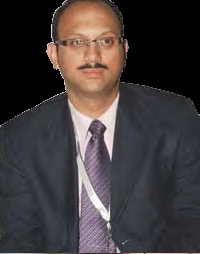 What is your assessment of trained human resource demand in the industry? Which are the ‘hot sectors’ that will drive the demand in the coming years?
What is your assessment of trained human resource demand in the industry? Which are the ‘hot sectors’ that will drive the demand in the coming years?
If you look at the next five years, the sense that we get is that sectors like Internet and communication technologies, BPOs, retail, hospitality and tourism will continue to grow. A lot of research is being done in the industry on the issue of employability and employment opportunities status in India as they say there is going to be a massive jump in demand for trained workforce. Of course, the next year is going to be a blip in terms of the current global financial downturn. But in long-term, the Indian growth story for next five year looks very intact and many of the sunrise sectors will exponentially grow. I am fairly bullish from the employment opportunity perspective.
Given the current economic recession, what in your view are the concerns or opportunities for India’s talent pool?
In the current economic scenario, the demand for quality is expected to increase, leading to more competition in the market for skilled manpower. This was however, not the case in the past, when fuelled by a high growth rate, even a person with average talent could get recruited as more jobs were available. Thus it becomes all the more important for our talent pool now to start building their skill sets.
The employability of our graduates and MBA’s is a very big issue. According to the figures available with MeritTrac, the employability ratio of our MBA or engineering graduates or even non-engineering graduates is 15-25 %. The common parameters we take into account while assessing employability are: communication skills, analytical thinking and problem solving, how fast a person can learn, and finally the work ethic or ability to transform oneself from the campus to corporate scenario. Employers cutting across all sectors look for these parameters while employing a graduate. And most of our graduates lack these skills. The reason being our education system stressing on rote learning and memorising. In my view, this is a big concern and its high time our graduates worked upon acquiring these skills.
How do you help corporate India manage its ‘white collar’ work force? What model do you follow?
MeritTrac is wholly into assessment, we do not provide any kind of training or related services. We believe that what cannot be measured cannot be improved. We first do a series of assessments that help organisations understand what skill sets their employees have, and what needs to be achieved. Once adequate training is provided to their workforce, we come back with our assessments and measure whether that training has been affective or not. For example, for one of the largest retail chains in India, we assessed all their frontline executives across variety of skills which included communication skills, mental ability, sale and customer service skills, etc.
Our models of assessments are mostly homegrown. We have never been a part of any model ourselves. Our perspective is that what works in other parts of the world may not necessarily work in India. So the tests are designed and delivered for our clients keeping in mind this perspective.
|
In the current economic scenario, the demand for quality is expected to increase, leading to more competition in the market for skilled manpower. Thus it becomes all the more important for our talent pool now to start building their skill sets |
Would you like to share with our readers some of the key learnings from your entrepreneurial journey?
Having survived one downturn in 2001 and facing another one now, I think one of the main learning is obviously, to never give up. If you believe in something, you have to keep going irrespective of any situation or downturn and give your 200 %. Second is the ability to dream and of course translate that dream into a reality. Sometimes we get so caught up in the day to day stuff, that we forget the big picture. Third is, I think, the ability to co-opt your entire eco-system, be it investors, customers, employees, partners, etc. This is very important for the success of any entrepreneurship. Always think of collaborative approaches to all issues.



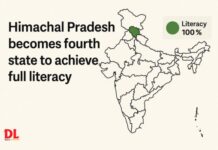
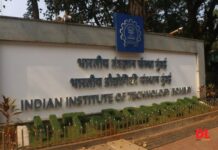

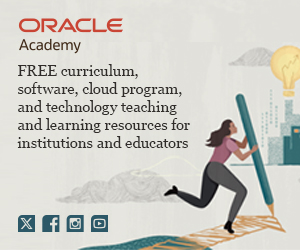

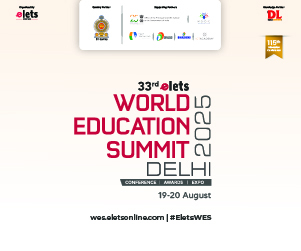

 Guru Harkrishan Public School, Vasant Vihar, New Delhi, is not just a school, but an institution with a vision of fostering an environment where children are free to learn not just the basic skills and concepts but also discover and develop their hidden potential. As enshrined in the school`s motto `Vidya Vichari Tan Parupkari`, meaning he is learned who does good to others, the aim is to produce ideal members of the society
Guru Harkrishan Public School, Vasant Vihar, New Delhi, is not just a school, but an institution with a vision of fostering an environment where children are free to learn not just the basic skills and concepts but also discover and develop their hidden potential. As enshrined in the school`s motto `Vidya Vichari Tan Parupkari`, meaning he is learned who does good to others, the aim is to produce ideal members of the society








